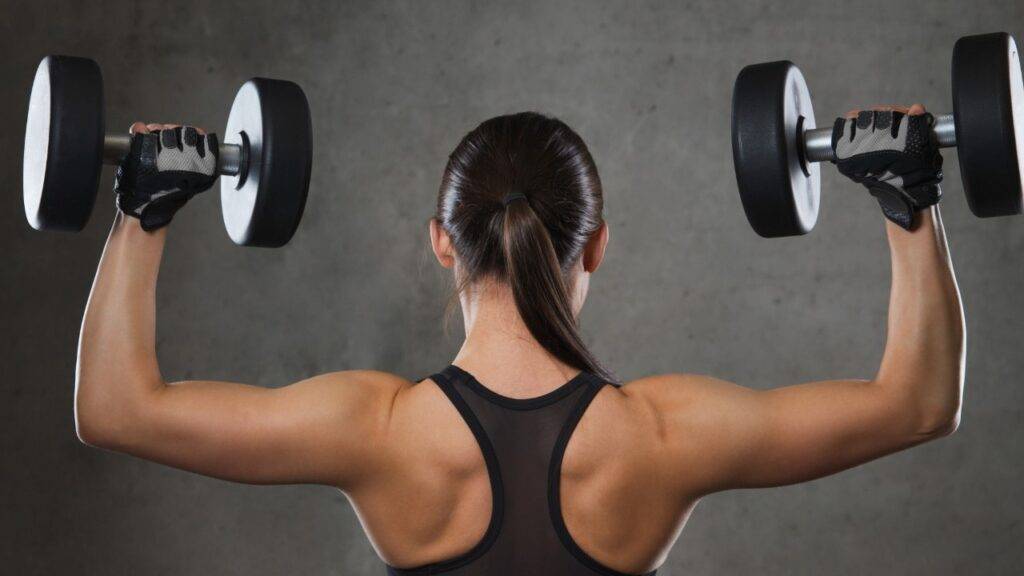Rear Delt Exercises Dumbbell: 10 Moves to Banish Shoulder Winging
Banish shoulder winging with 10 effectives rear delt exercises dumbbell. Strengthen your rear delts for improved shoulder health and posture.
Key Takeaways:
| Benefit | Details |
| Shoulder Health | Rear delt exercises dumbbells strengthen the often-neglected rear deltoids to improve posture and prevent injuries. |
| Muscle Balance | Targeting the rear delts with these moves’ complements chest/front delt work for total shoulder development. |
| No Gym Required | These highly effective rear delt exercises dumbbell can be done at home with just a set of dumbbells. |
| Functional Strength | Strong rear delts improve pulling power and promote stability in lifts like rows, pull-ups, and presses. |
The Importance of Rear Delt Exercises Dumbbell
Don’t overlook rear deltoid training to achieve a balanced physique and strong shoulders. Rear Delt Exercises Dumbbells target this crucial muscle group, enhancing posture and shoulder health. Strengthening these muscles helps prevent issues like shoulder winging and improves upper-body symmetry. Incorporate compound exercises like rows alongside targeted rear delt exercises with dumbbells for optimal results.
What Are the Rear Delts?
The rear delts, or posterior deltoids, are one of the three deltoid muscle heads that make up the shoulder. They are located on the backside of the shoulder and are responsible for extending the arm backward and outward away from the body.
The rear delts don’t get nearly as much work as the front and side deltoids during common exercises like presses and raises. This can lead to muscular imbalances and poor shoulder health if left unaddressed. Directly training the rear delts helps create balanced, well-rounded shoulder development.
Benefits of Rear Delt Training
Strengthening the rear delts provides both aesthetic and functional benefits:
Improved Posture
The rear delts help pull the shoulders back into proper alignment, counteracting the internal rotation caused by tight pecs and overworked front delts. This creates a better overall posture.
Shoulder Health
The rear delts work synergistically with the rotator cuff muscles to stabilize the shoulder joint during pressing and pulling movements. Training them reduces injury risk.
3D Shoulder Caps
Prominent rear delt development gives the shoulders a fuller, more three-dimensional look when viewed from the side or rear for an impressive physique.
Overhead Strength
The ability to lockout weight overhead in strict presses, handstand pushups, and the like relies heavily on rear delt strength.
Pull-Up Power
During vertical pulling movements, the rear delts work isometrically to keep the shoulders depressed and stabilized. Stronger rear delts improve pulling prowess.
Top 10 Rear Delt Exercises Dumbbell
Here are 10 killer rear delt exercises dumbbell to add to your routine for complete shoulder development and a wing-free physique:
Bent-Over Dumbbell Reverse Fly
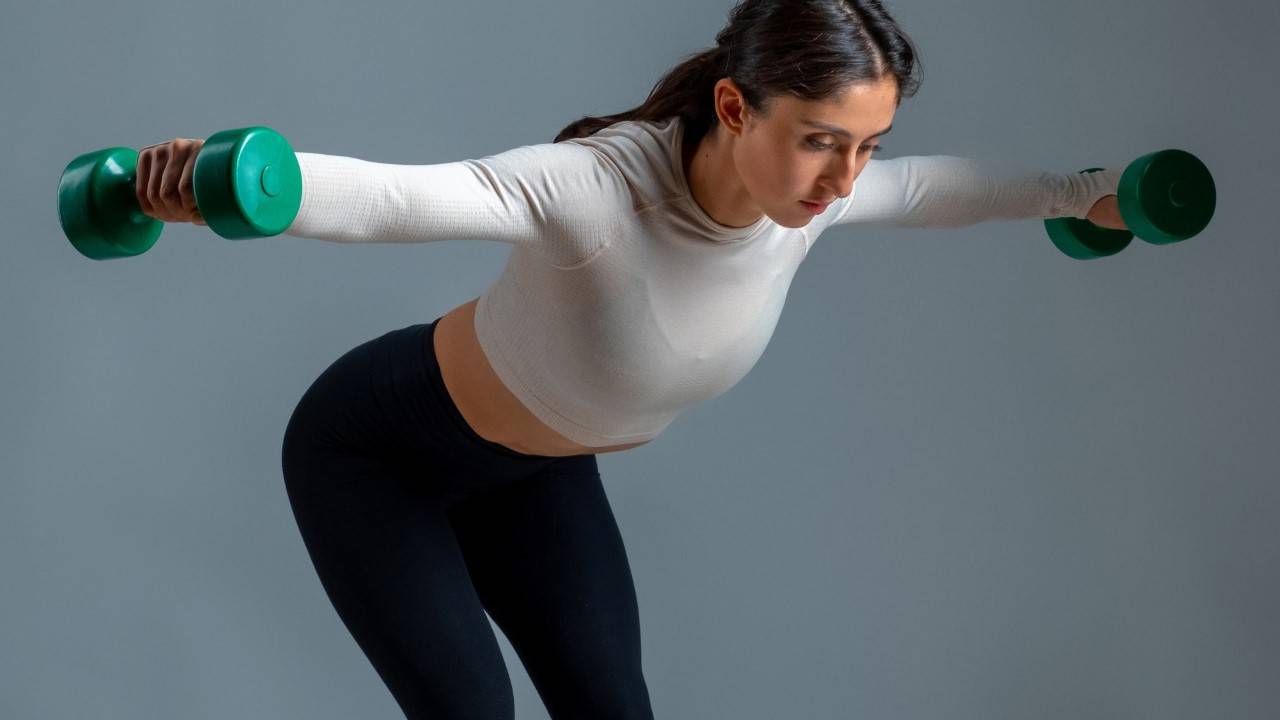
One of the classic Dumbbell workouts for rear deltoids. The reverse fly isolates the rear delts like a few others. Hinge forward from the hips with a slight knee bend and let the dumbbells hang perpendicular to your torso. Initiate the movement by squeezing the rear delts and lifting the weights out to the sides in a reverse hugging motion. Pause briefly at the top contracted position before lowering back to the start under control.
Face Pull

While not a direct Dumbbell workout for rear deltoids. The face pull is a powerful compound move that hammers the rear delts while also strengthening the upper back and hitting those hard-to-target rotator cuff stabilizers. Set up with your arms extended and dumbbells at eye level, then pull the weights back by squeezing the rear delts until the dumbbells graze the sides of your face. Return to the start position by extending the arms.
Prone Dumbbell Reverse Fly
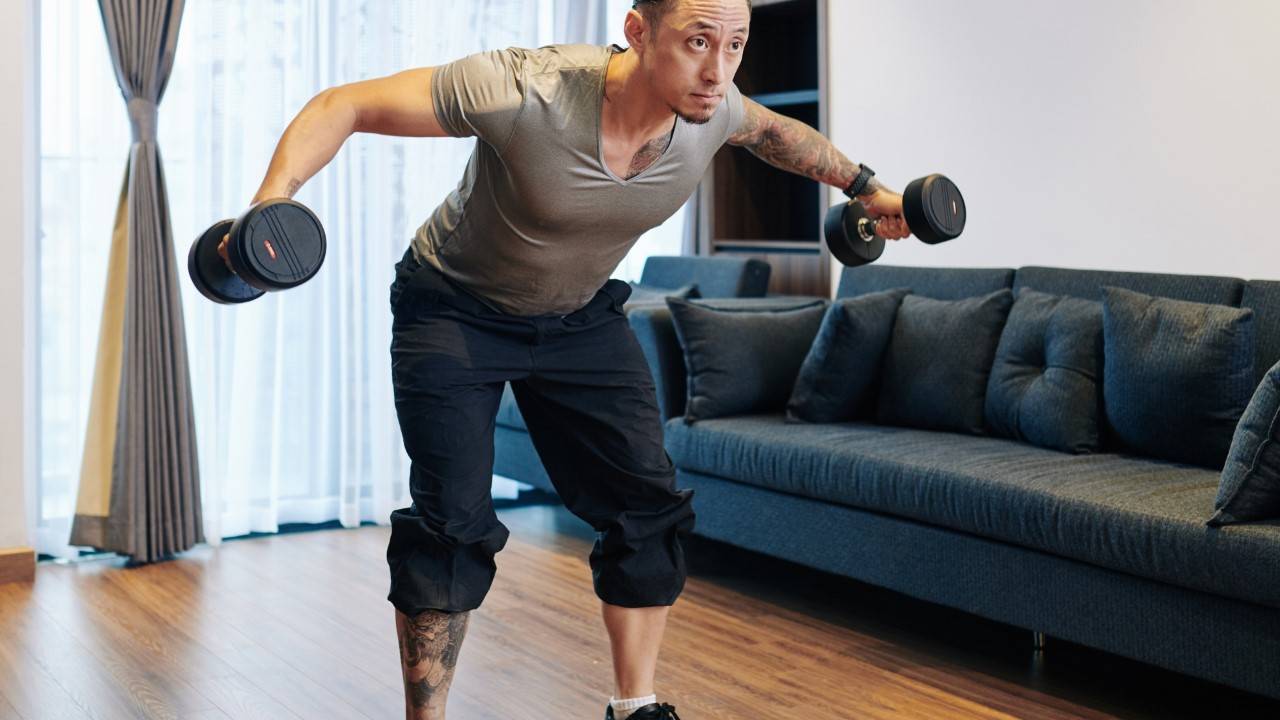
Take the reverse fly to the next level by performing it in a prone position on a bench. With your chest and hips supported, allow the dumbbells to hang perpendicular to your torso with a slight bend in the elbows. From there, engage the rear delts to raise the weights out laterally until your arms form a T-shape at the top. Release slowly before repeating.
Seated Dumbbell Rear Delt Raise
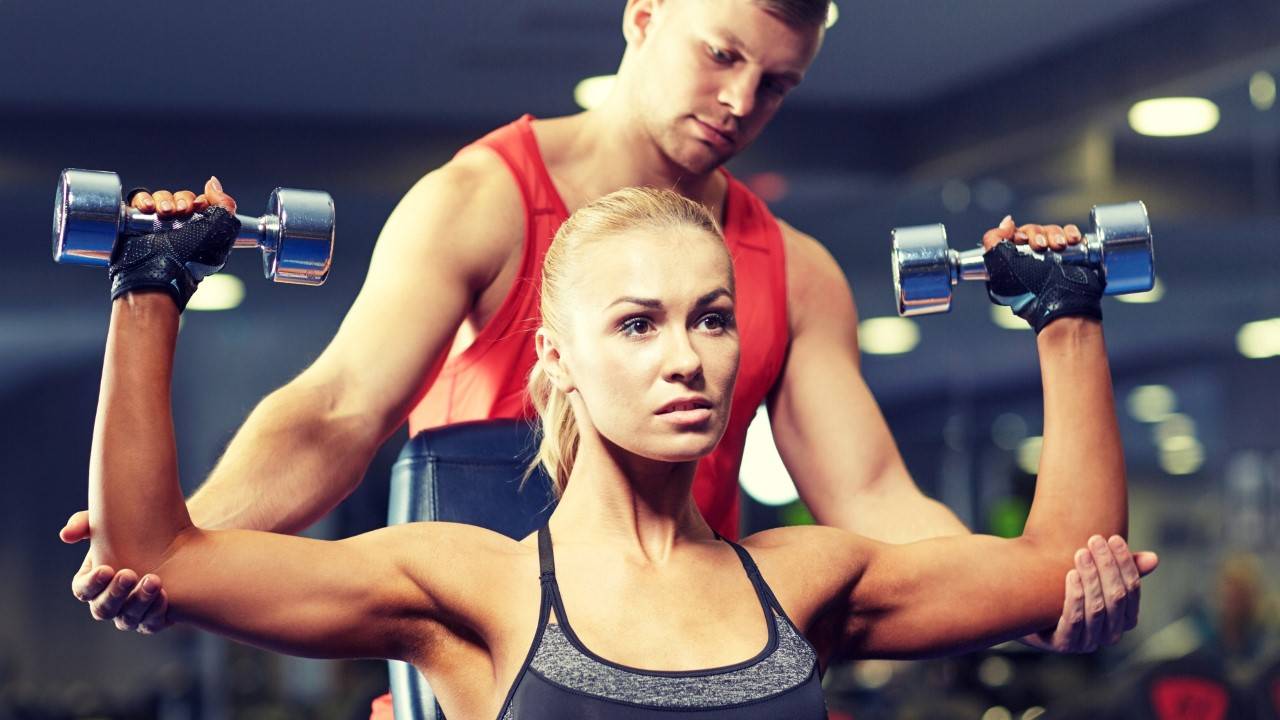
As one of the most direct rear delt exercise dumbbells, the rear delt raise allows you to keep your torso upright and isolate the delts effectively. Sit upright holding dumbbells at your sides with palms facing behind you. Keeping a slight bend in the elbows, raise the weights out laterally until they reach shoulder height. Squeeze the rear delts hard at the top before lowering them under control.
Incline Bench Rear Delt Raise
Take the rear delt to raise a notch by performing it on an incline bench set to about 45 degrees. This angle allows you to get a deeper stretch in the rear delts on the eccentric (lowering) portion while still being able to fully contract the delts at the top. The increased range of motion amplifies the mind-muscle connection for more growth.
High Incline Row
While not solely a Dumbbell workout for rear deltoids. The high incline row still scorches the posterior delts isometrically as they work to keep the shoulder blades retracted. Set up on a high incline bench around 70-80 degrees and row the dumbbells up toward your lower chest by driving the elbows straight back. Squeeze the shoulder blades together forcefully at the peak contraction.
Face Pull to Rear Delt Raise Combo
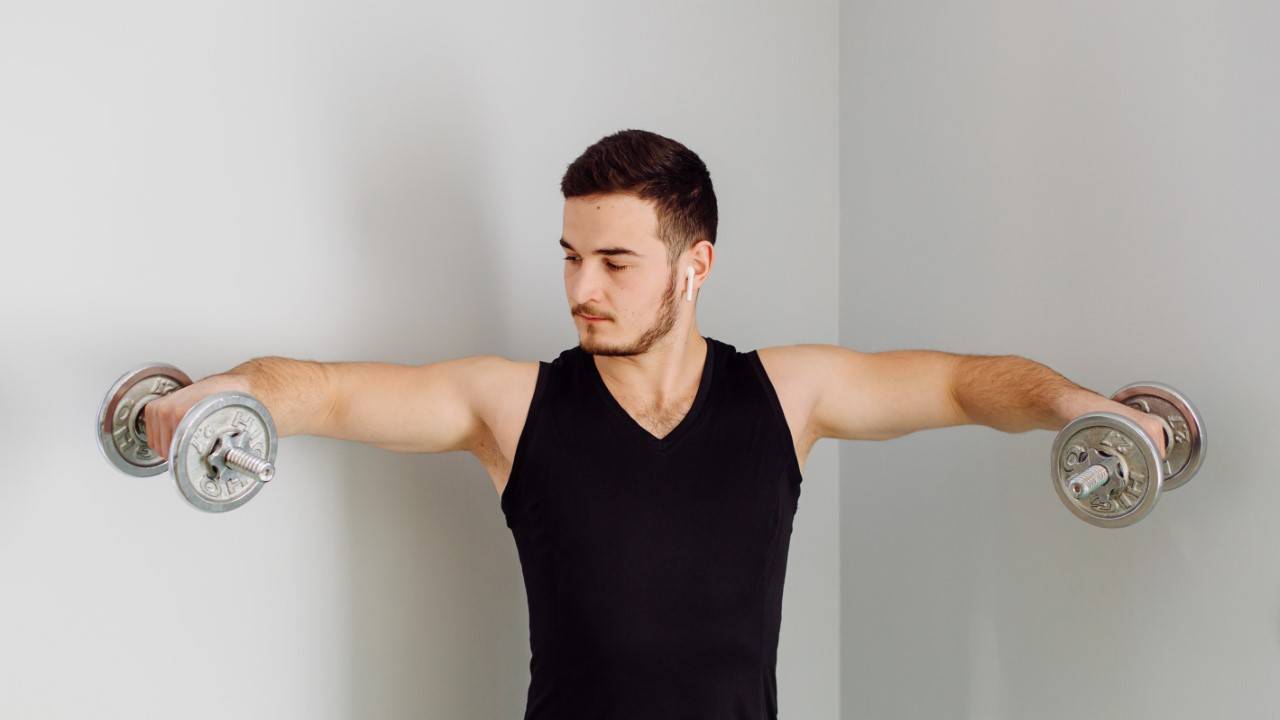
Combine two killer Dumbbell exercises for the rear deltoids into one brutal superset with this compound move. Start in the face pull position with arms extended, then pull the weights back so they graze the sides of your face. From there, rotate the arms out laterally to transition into a rear delt raise at the top. After squeezing hard, reverse the motion to return to the start. This hybrid movement hits both planes of motion for maximum fiber activation.
Single-Arm Snatches

While primarily a full-body power move, the single-arm snatch is still an excellent auxiliary rear delt exercise dumbbell that develops total shoulder strength and stability. Flip the focus to the rear delts on these by really squeezing the shoulders back and engaging the rear delts to lock out the arm overhead at the peak contraction. Just be sure to use a lighter weight and focus on control.
Seated Inertia Rear Delt Swing
Using a cable machine or resistance band anchored overhead, sit upright and pull the handles down and back toward your body by driving with the rear delts. As the resistance tries to swing the handles forward again, forcefully contract the rear delts to resist that momentum and prevent unwanted movement. This inertia leads to an impressive peak isometric contraction that will fatigue the rear delts rapidly.
Dumbbell Shrug to Upright Row Combo
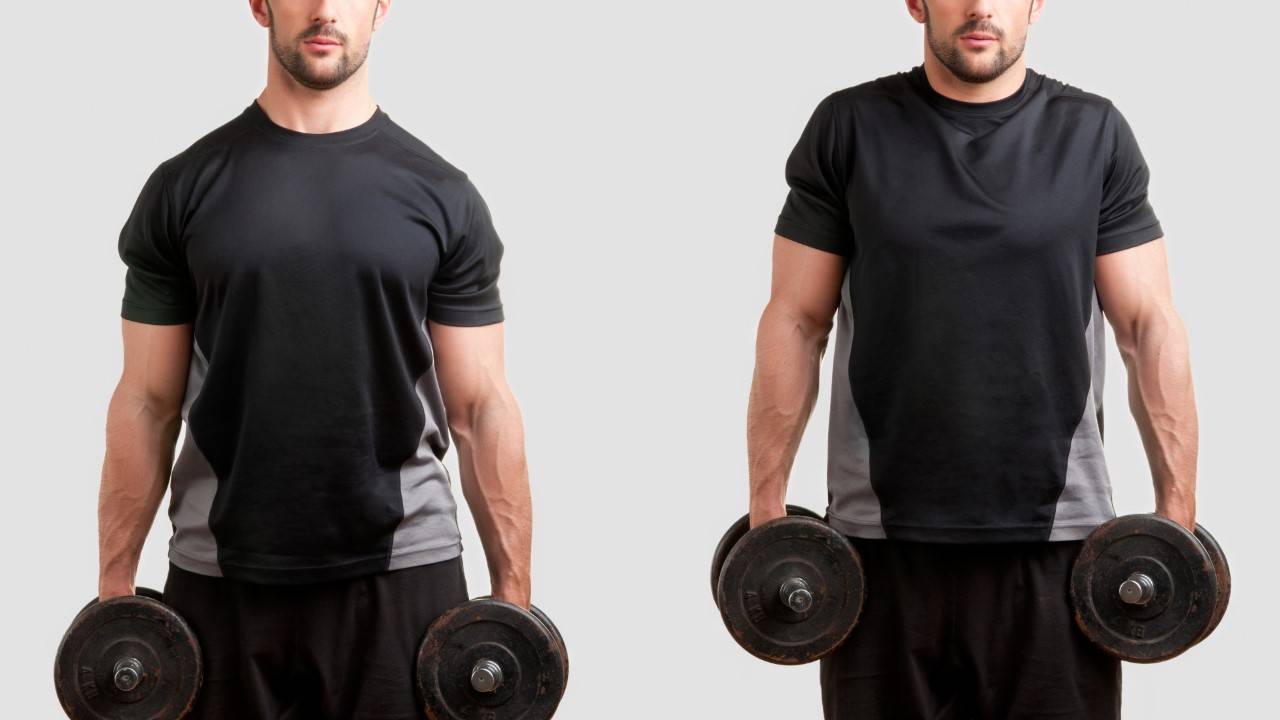
End your rear delt routine with this brutal burner that hits the traps and rear delts from several planes. Hold the dumbbells at your sides and shrug them powerfully upward, releasing the traps at the top. From there, row the weights up toward your chin while focusing on squeezing the rear delts. Reverse the motion under control before repeating.
What Muscles Do Rear Delt Exercises Dumbbell Work?
The primary muscle group targeted by the Dumbbell exercises for the rear deltoids is, as the name implies, the rear or posterior deltoids. This is one of the three deltoid heads that make up the shoulder muscle along with the front (anterior) and lateral (side) deltoid heads.
While the front delts are heavily involved in pushing movements like presses, the rear delts play a vital role in pulling actions and keeping the shoulders properly positioned and stable. Dumbbell exercises for the rear deltoids directly load and fatigue these posterior fibers to develop complete, three-dimensional shoulder caps.
However, the rear delts aren’t the only beneficiary of these exercises. The rear delts connect directly to the infraspinatus and teres minor muscles, which are part of the rotator cuff. So rear delt exercises dumbbells also tend to engage and strengthen these rotator cuff muscles to improve overall shoulder health and function.
Additionally, many compound rear delt exercises dumbbell-like rows and pull-ups heavily tax the larger back muscles like the lats, traps, rhomboids, and rear delts in an isometric fashion. They also indirectly work the biceps as stabilizers.
So, in summary, while the rear delt exercises dumbbell isolates the posterior deltoids as a prime mover, they provide benefits for total upper body development and structural balance.
Top Benefits of Rear Delt Training
Having strong, developed rear deltoids provides both aesthetic and performance-related benefits that make rear delt exercises dumbbell well worth your time and effort:
Benefit 1: Complete Shoulder Development Training for the rear delts with targeted Dumbbell exercises for the rear deltoids. creates a more aesthetic, balanced look to the shoulders from all angles. No more looking boxy or front-heavy – your shoulders will have that coveted 3D pop.
Benefit 2: Improved Posture The rear delts play a key role in stabilizing the shoulder joint and preventing the shoulders from rolling forward into an internally rotated position. Dumbbell exercises for the rear deltoids. can help naturally pull the shoulders back into better alignment.
Benefit 3: Injury Prevention
Weak rear delts combined with overdeveloped chest/front delt strength is a common recipe for shoulder impingement issues and injuries. Restoring balance with Dumbbell workouts for rear deltoids. reduces this risk.
Benefit 4: Enhanced Overhead Strength The rear delts are heavily involved in keeping the arms locked out overhead during lifts like strict presses and handstand push-ups. Strong rear delts from rear delt exercise dumbbells provide stability for these movements.
Benefit 5: Increased Pulling Power Rear delts work hard isometrically during vertical and horizontal pulls like rows and pull-ups. Strengthening this muscle with Dumbbell workouts for rear deltoids. therefore, enhancing overall pulling strength.
Benefit 6: V-Taper Physique
Everyone wants that coveted V-taper look with broad shoulders tapering down to a narrow waist. By developing prominent rear delts, you’ll accentuate your upper body width for this aesthetic.
Training Rear Delts the Right Way
To maximize growth in the rear delts, you’ll want to attack them from multiple angles using a variety of rep ranges and training techniques. Here are some tips for effectively programming rear delt exercises dumbbell:
- Train Them Directly While compound back moves like rows and pull-ups hit the rear delts hard, you’ll still want to incorporate 2-4 sets of direct isolation rear delt exercises dumbbell like rear delt raises each week for maximum development.
- Use a Variety of Angles The rear delts can be trained through different planes of movement for optimal fiber recruitment. Hit them with bent-over, seated, prone, and dynamic variations of rear delt exercises dumbbell.
- Try Different Rep Ranges For functional hypertrophy, aim for 8-12 reps on most Dumbbell workouts for rear deltoids. But don’t be afraid to go heavier (4-6 reps) or lighter (15-20 reps) to shake things up.
- Apply Intensity Techniques Drop sets, partial reps, forced reps, and other intensity boosters take Dumbbell exercises for the rear deltoids to the next level for maximum growth. Just be cautious with exercises that put the shoulders in compromised positions.
- Allow Adequate Recovery The rear delts are relatively small muscles that recover a bit slower. Try to space out your direct rear delt exercises dumbbell by 3-4 days to allow for optimal recovery and growth.
- Don’t Neglect the Front While the focus of this article is Dumbbell exercises for the rear deltoids, make sure you’re still training the opposing front delts and chest with presses and raises for total shoulder balance and development.
The Rear Delt Advantage
While often an afterthought in most gym routines, the rear delts are an essential component for complete, balanced shoulder development and overall upper body strength and function. By prioritizing rear delt exercises dumbbell, you’ll improve your physique aesthetics while also enhancing performance on big lifts like rows and presses.
The best part is you don’t need more than a set of dumbbells to attack the rear delts from multiple angles. The 10 movements outlined above provide a roadmap for strengthening those often-neglected posterior delts to create that coveted 3D look.
So, get ready to say goodbye to shoulder winging and hello to boulder shoulders by making rear delt exercises dumbbells a staple in your training. With commitment and consistency, complete shoulder development is well within reach.

